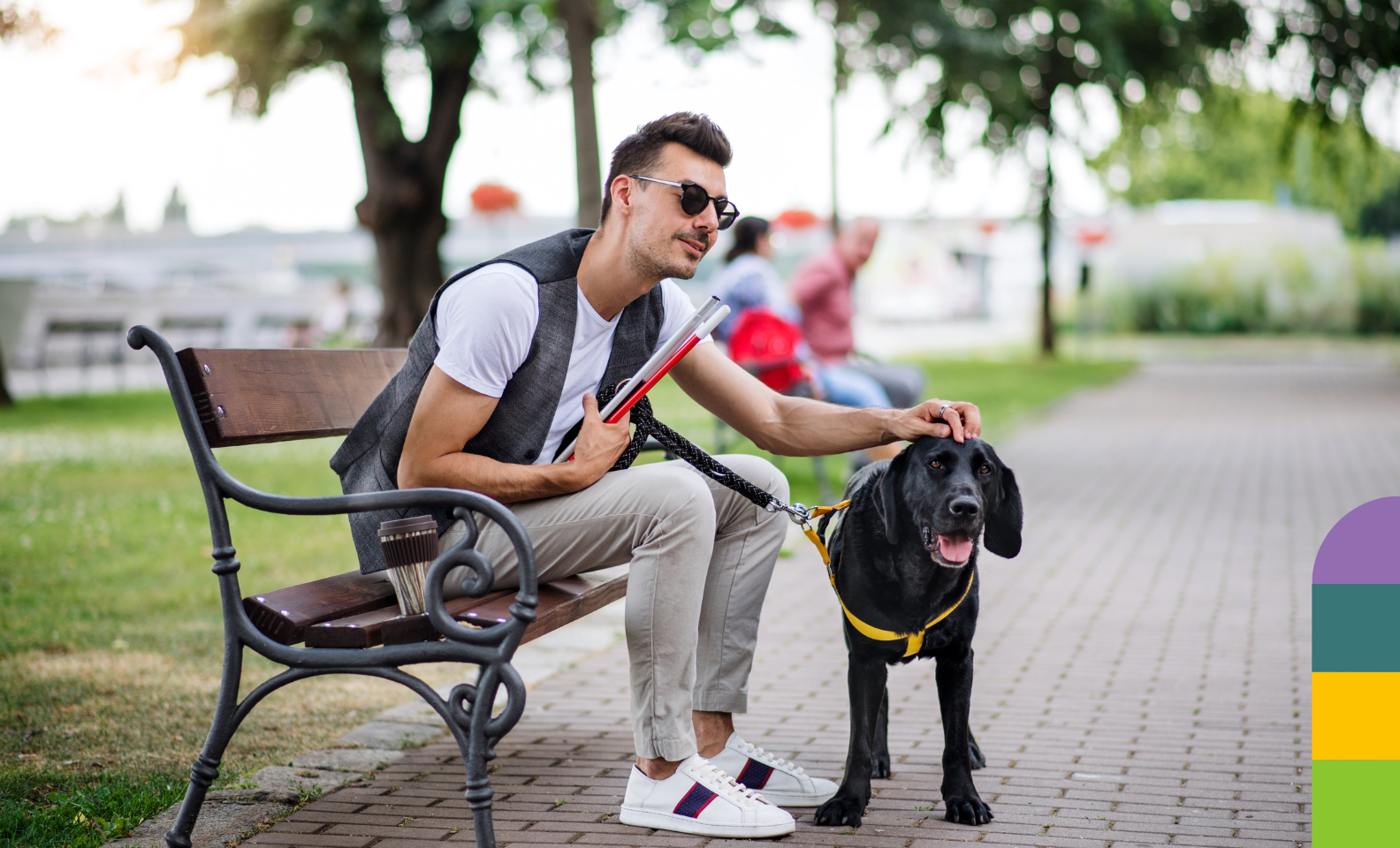The Amazing Benefits of Guide Dogs for the Blind
A person’s life can be affected in many ways by having a vision impairment. But there are many ways to get around some of the challenges and limitations that vision impairment can place on a person. SIL providers in Sydney and NDIS assisted living are some of those ways, and having a guide dog is another effective option.
What is a Guide Dog?
Guide dogs are highly trained animals that assist people with visual impairments, providing them with increased mobility, independence, and confidence. The benefits of having a guide dog for someone with vision impairment are numerous and can have a significant impact on their daily lives.
Below are some of the main benefits:
Guide dogs serve a purpose beyond that of a pet. It is a working animal with specialised training that aids blind or low-vision individuals in safely and independently navigating their surroundings. A guide dog can do a lot, including:
- Leading its owner around things like bins, cars, poles, and people.
- Making stops at crossings, stairs, doors, and curbs.
- Locating things like seats, counters, buttons, and handles.
- Reacting to commands like sit, forward, left, and right
- Defying orders if they are risky, like going across a bustling street.
But a guide dog does more than just help its owner to move around. A guide dog also provides emotional support, social benefits, and physical activity for its owner.
Primary Benefits of Guide Dogs
Increased Mobility: Guide dogs are trained to safely navigate through obstacles, including navigating street crossings, finding doors, and avoiding hazards. They can guide their owners in a straight line, stop at curbs and stairs, and help them find their way around unfamiliar environments. This increased mobility can lead to greater independence and a greater sense of freedom.
Improved Confidence: Guide dogs can help their owners feel more confident and secure when traveling outside the home. With a guide dog by their side, they can feel more in control of their surroundings and be more willing to engage with others.
Social Benefits: Having a guide dog enables those with vision impairment to be more active and engaged within their local community. As we all know, well too often, physical disability can lead to mental ill-health due to the barriers and challenges those face. By having a companion who enables someone to get out and about, enjoy the fresh air, and par-take in community activities leaders to a greater sense of purpose and hence fulfillment in one’s lives.
Improved Safety: Guide dogs are trained to help their owners avoid hazards and navigate through unfamiliar environments safely. They can also alert their owners to potential dangers, such as low-hanging obstacles or uneven terrain.
Secondary Benefits of Guide Dogs
Emotional support: A guide dog can reduce the feelings of loneliness, anxiety, and depression that often accompany blindness. A guide dog can offer companionship, comfort, and unconditional love to its owner. A guide dog can also boost its owner’s confidence and self-esteem by enabling them to achieve their goals and pursue their interests.
Social Interactions: A guide dog can facilitate social interaction and inclusion for its owner. A guide dog can attract positive attention and admiration from others who may otherwise ignore or pity a blind person. A guide dog can also serve as a conversation starter and help its owner to make new friends and connections.
Physical activity: A guide dog can encourage physical activity and health for its owner. A guide dog requires regular walks and exercise that can benefit its owner’s fitness and well-being. A guide dog can also help its owner to enjoy outdoor activities and hobbies that they may otherwise avoid or miss out on.
How is a Guide Dog trained?
The training process of a guide dog in Australia is similar to that of other countries and generally involves the following steps:
Selection and Evaluation: Dogs that are bred for guide dog work or are rescued from animal shelters are evaluated based on their temperament, health, and suitability for guide dog work. This evaluation includes a thorough medical examination and a behavioural assessment to determine the dog’s potential to become a guide dog.
Puppy Raising: Puppies selected for guide dog training are placed with volunteer puppy raisers for the first year of their life. During this time, they receive socialisation and basic obedience training, as well as exposure to various environments and experiences. The puppy raisers also provide love, care, and attention to help the puppies develop into well-rounded dogs.
Advanced Training: After the first year of life, the puppies are sent to a guide dog training centre for advanced training. This training involves intensive instruction in guide work skills, including navigating through various environments, responding to commands, and avoiding obstacles.
Matching and Team Training: Once a dog has completed their advanced training, they are matched with a visually impaired person. The pair then undergoes several weeks of team training to learn to work together effectively and develop a strong bond. During this time, they learn to navigate various environments, including busy streets, public transportation, and other challenging situations.
Certification: After completing team training, the dog and owner are evaluated to ensure that they are working effectively together. If they pass the evaluation, they graduate as a certified guide dog team.
Guide dog training in Australia is typically provided by organisations such as Guide Dogs Australia, which have dedicated facilities, trainers, and volunteers to support the entire training process. These organisations also provide ongoing support and services to certified guide dog teams, including veterinary care, equipment, and training updates.
Guide dogs are remarkable animals that make blind people’s lives better in numerous ways. Because of their contribution to the lives of blind people, they are deserving of our respect, admiration, and gratitude.




